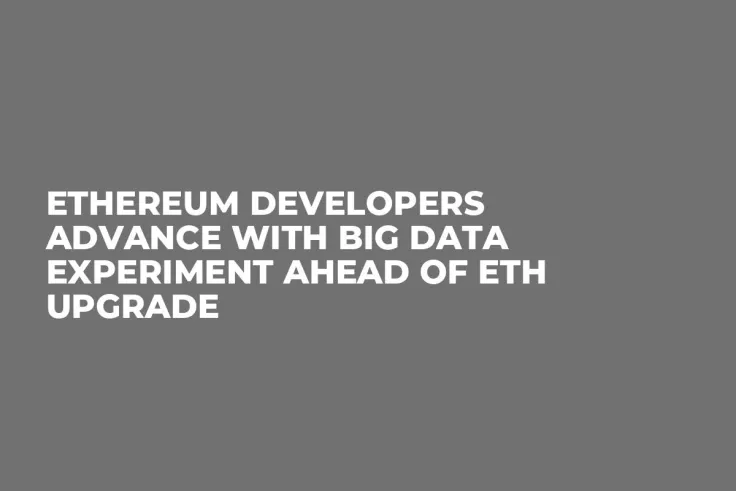
Disclaimer: The opinions expressed by our writers are their own and do not represent the views of U.Today. The financial and market information provided on U.Today is intended for informational purposes only. U.Today is not liable for any financial losses incurred while trading cryptocurrencies. Conduct your own research by contacting financial experts before making any investment decisions. We believe that all content is accurate as of the date of publication, but certain offers mentioned may no longer be available.
Ethereum developers are advancing preparations for the upcoming ETH upgrade with a big data experiment.
Dankrad Feist conducted a data experiment to assess the ability of the Ethereum mainnet to handle huge blocks, and Christine Kim shares his findings.
Coming at you with another Ethereum dev call writeup.
— Christine Kim (@christine_dkim) June 2, 2023
This week, @dankrad presented findings from a big data experiment testing the effects large-sized blocks on mainnet Ethereum.
More below 👇https://t.co/CH98ODwvKp
On Ethereum, blocks with additional data ranging from 128 kB to 1 MB were propagated for sustained periods of 10 slots. Notably, the Ethereum network stayed steady and did not seem to experience any problems with the additional data loads for the entire range of block sizes.
The team evaluated how these large blocks affected metrics including bandwidth use, block propagation times and the number of missed attestations.
However, there were no irregularities brought on by block size across every metric, but only a case of a block reorg during propagation involving a block with 1MB more of data.
Feist suggested expanding the EIP 4844 specification's maximum number of blobs per block from four to six in light of the experiment.
In light of the growing amount of data that Ethereum nodes are anticipated to deliver, he also suggested reassessing the four-second deadline for receiving blocks in a slot.
Ethereum client developers are considering including EIP 4788 in the Deneb upgrade in addition to EIP 4844. Other than the two EIPs already stated, EIP 7045, which is "increase max attestation inclusion slot" and "fixed optional exit domains," is also being examined for inclusion in Deneb.
To give some context, EIP 4788 introduces a trust-minimized method for smart contracts and decentralized applications (dApps) to access the consensus layer and data like validator balances, activity and awards.
More on EIP 4844
According to Christine Kim's write-up of the Ethereum All Core Developers Consensus Call, developers are getting ready to launch their sixth official test network for EIP 4844. One may argue that Ethereum's EIP 4844 execution is the most significant upcoming event.
Known as "proto-danksharding," its primary objective is to increase Ethereum's scalability.
It will be implemented during the Deneb-Cancun upgrade, which is scheduled to happen in 2023's late third or early fourth quarter. The costs associated with using Ethereum Layer-2 solutions are predicted to drop dramatically with the introduction of EIP 4844, estimated to be at least 10 times lower and possibly even up to 100 times lower.
According to IntoTheBlock, the implementation of proto-danksharding is anticipated to result in an increase in economic activity, both on Layer 2 solutions and the Ethereum network as a whole.
 Dan Burgin
Dan Burgin Gamza Khanzadaev
Gamza Khanzadaev Godfrey Benjamin
Godfrey Benjamin Tomiwabold Olajide
Tomiwabold Olajide